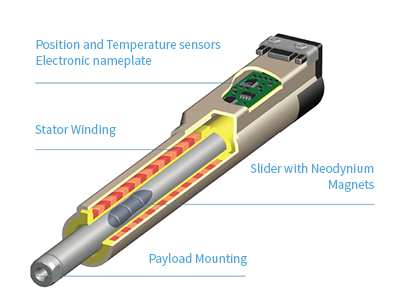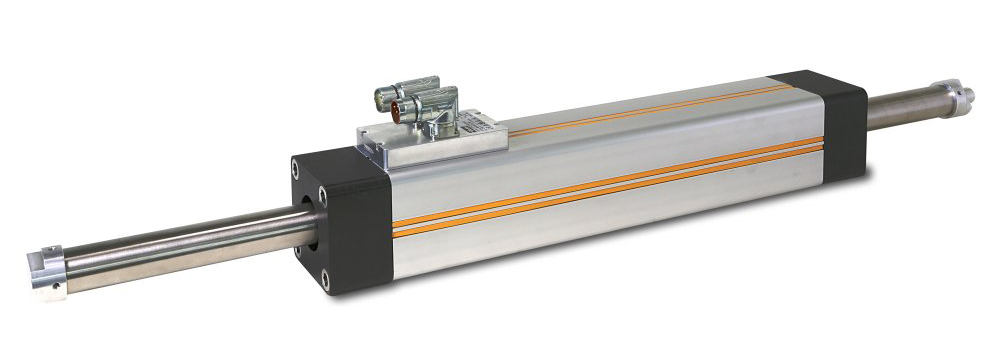In a recent post, we looked at traditional iron core and ironless linear motors, both of which have a flat-type construction. But another type of linear motor, often referred to as a “tubular linear motor,” is also gaining traction in industrial applications. This is especially true in the packaging and medical industries, where tubular linear motors have proven an ideal replacement for pneumatics, with a similar form factor but much better efficiency and reliability.
Like their flat counterparts, tubular linear motors have two main parts: permanent magnets and a stator that houses windings. But in the tubular linear motor design, the magnets are not laid out on a flat track; instead, disc-shaped magnets are embedded in a tube (often referred to as a thrust rod), and the stator (also referred to as a forcer) surrounds the thrust rod.

Image credit: LinMot USA, Inc.
The tubular design has several key benefits over flat linear motors. First, all the magnetic flux from the permanent magnets is harnessed to generate force. And, according to the Lorentz force principle, the force generated by the interaction of the thrust rod magnets and the stator coils is perpendicular to both the magnetic field and the current — in the direction of travel. These two attributes give tubular linear motors extremely high efficiency. This higher efficiency means less heat is generated, so there is less expansion and contraction of components due to thermal effects, and less heat is transferred to the external load. The end result of higher efficiency and less heat generation is better positioning accuracy.
Force production for tubular designs is a linear function of drive current, because the air gap between the stator and thrust rod is non-critical. This means that even if the air gap varies over the length of the stroke, the motor’s force production will remain the same.
Another benefit of tubular designs over flat linear motors is their compact footprint. And tubular linear motors can operate with either the stator (forcer) moving and thrust tube stationary, or with the thrust tube moving while the stator is held stationary. The ability to have the trust tube moving is one of the attributes that makes tubular linear motors a good replacement for pneumatic cylinders, which often operate with an extending and retracting rod, for pushing or pressing operations.

Image credit: Parker Hannifin Corp.
Like their flat counterparts, tubular linear motors can use iron in the stator surrounding the coils, or they can be constructed with ironless stators. Ironless types produce less force, but don’t experience cogging, so they can achieve very smooth motion, even at low speeds.
Tubular designs with iron in the stator have an ease-of-use benefit over their flat, iron core counterparts because the cylindrical design effectively balances the attractive and repulsive forces between the stator and the thrust rod, so assembly is not as difficult for iron core tubular designs as it is for iron core flat designs. But, like their flat counterparts, tubular iron core linear motors do experience cogging.

Leave a Reply
You must be logged in to post a comment.